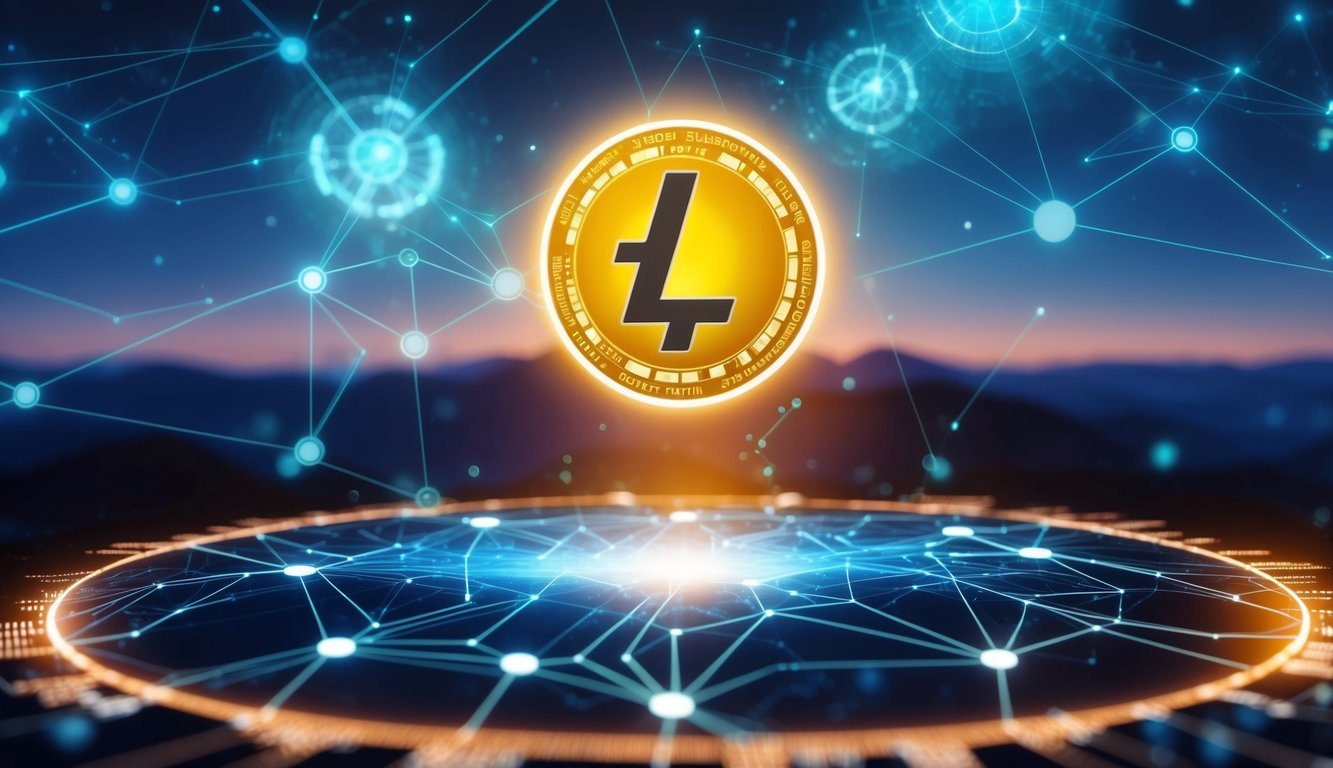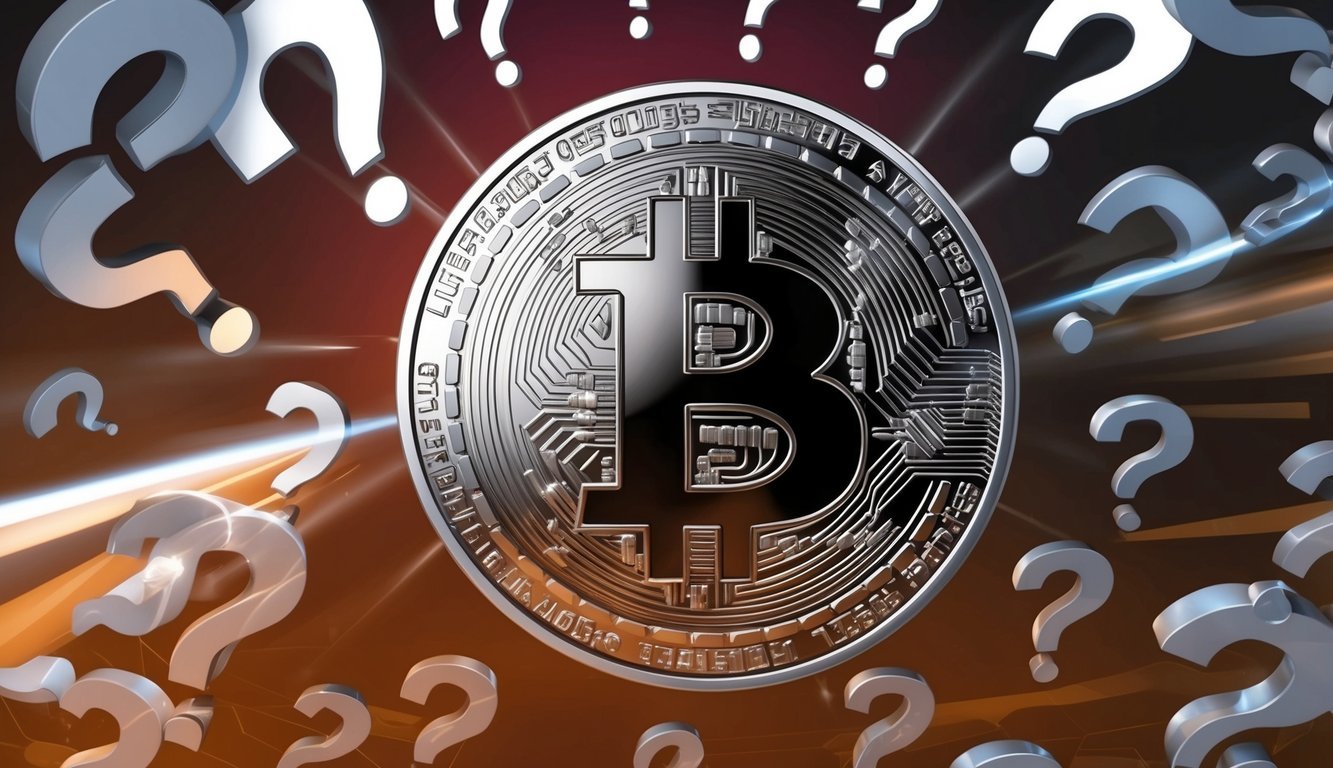Litecoin is a digital currency that works a lot like Bitcoin. It’s fast, cheap to use, and lets you send money to anyone in the world without banks getting in the way. Charlie Lee, a former Google engineer, created Litecoin in 2011. He designed it to be a quicker and more accessible version of Bitcoin.

You might wonder why Litecoin is important when Bitcoin already exists. Well, Litecoin is often called the “silver to Bitcoin’s gold.” It’s faster and cheaper to use than Bitcoin, which makes it great for everyday transactions. Plus, there will only ever be 84 million Litecoins, compared to Bitcoin’s 21 million.
If you’re looking to get into cryptocurrencies, Litecoin could be a good place to start. It’s been around for a while, it’s widely accepted, and it’s easier to mine than Bitcoin if you want to try that out. Just remember, like all cryptocurrencies, its value can go up and down quickly.
Key Takeaways
- Litecoin is a fast, low-cost digital currency created to improve on Bitcoin’s design.
- You can use Litecoin to send money globally without banks, making it useful for everyday transactions.
- While Litecoin is more accessible than Bitcoin, it still comes with the risks associated with cryptocurrency investing.
Understanding Litecoin’s Basics
Litecoin is a digital currency that aims to make payments faster and easier. It shares some similarities with Bitcoin but has its own unique features. Litecoin operates on a decentralized network and uses technology that allows for quicker transaction confirmations compared to Bitcoin. Additionally, it employs a different hashing algorithm, known as Scrypt, which makes mining more accessible. Many users also explore other cryptocurrencies, such as Siacoin, often asking the question, “what is siacoin? ” to understand its potential in the evolving market.
Key Features and Technology
Litecoin uses a blockchain to keep track of all transactions. This means your transactions are stored in a public ledger that anyone can view.
The network is decentralized, so no single person or group controls it. Instead, many computers around the world work together to keep it running.
Litecoin uses a proof-of-work system called Scrypt. This makes it different from Bitcoin and helps prevent large mining operations from taking over.
Litecoin vs Bitcoin
While Litecoin is similar to Bitcoin, there are some key differences:
- Litecoin processes transactions faster. You’ll see your payments go through in about 2.5 minutes, compared to 10 minutes for Bitcoin.
- There will be more Litecoins created over time. The max supply is 84 million, while Bitcoin’s is 21 million.
- Litecoin uses a different algorithm (Scrypt) which makes mining more accessible to regular people.
These changes make Litecoin better for everyday purchases and small transactions.
Mining and Block Rewards
When you mine Litecoin, you’re helping to process transactions on the network. In return, you can earn some Litecoin as a reward.
Miners use powerful computers to solve complex math problems. The first one to solve the problem gets to add a new block to the blockchain and receives a reward.
Currently, miners get 12.5 Litecoins for each block they add. This amount halves every four years, just like Bitcoin. The next halving is expected in August 2023.
Mining helps keep the network secure and running smoothly. It also controls how new Litecoins are created and distributed.
Market Dynamics and Investment
Litecoin’s market dynamics and investment potential are key factors for crypto enthusiasts. The coin’s market cap, trading volume, and availability on major exchanges all play important roles in its value and adoption.
Analyzing Litecoin’s Market Cap
Litecoin’s market capitalization is a crucial metric to watch. It shows the total value of all LTC in circulation. As of May 2024, Litecoin’s market cap was significant, though still smaller than Bitcoin’s.
The coin’s price can change quickly based on market conditions. This affects its overall value and ranking among other cryptocurrencies.
LTC’s trading volume is another important factor. Higher volume often means more interest and liquidity in the market.
LTC as an Investment
Investing in Litecoin can be risky due to its volatile nature. Prices can rise or fall sharply in short periods.
Before buying LTC, you should:
- Research its technology and use cases
- Compare it to other cryptocurrencies
- Consider your risk tolerance
- Think about your investment goals
It’s wise to chat with a financial advisor before making any big moves. They can help you understand how LTC fits into your overall investment strategy.
Remember, past performance doesn’t guarantee future results. The crypto market can be unpredictable.
Trading Litecoin on Exchanges
You can buy and sell Litecoin on many popular crypto exchanges. Some top options include:
- Coinbase
- Binance
- Kraken
These platforms let you trade LTC for other cryptocurrencies or fiat money. Each exchange has its own fees, features, and security measures.
To start trading:
- Choose an exchange
- Create an account
- Verify your identity
- Fund your account
- Place your first trade
Always use strong passwords and two-factor authentication to protect your funds. Keep an eye on the broader crypto market trends, as they can affect Litecoin’s price too.
Litecoin’s Ecosystem and Community
Litecoin has grown into a vibrant ecosystem with dedicated supporters and real-world use cases. You’ll find organizations, communities, and merchants working to advance Litecoin adoption and development.
Organizations Supporting Litecoin
The Litecoin Foundation leads Litecoin’s development and promotion efforts. They organize events, fund research, and support Litecoin Core developers. You can join their initiatives or donate to help further Litecoin’s mission.
Crypto exchanges play a key role too. They provide liquidity and make it easy for you to buy, sell, and trade LTC. Many major exchanges list Litecoin, giving it wide availability.
Some companies have built products specifically for Litecoin. You’ll find LTC wallets, payment processors, and even Litecoin-branded merchandise.
The Role of the Community
Litecoin’s community is passionate and active. You can connect with other LTC fans on social media, forums, and chat groups. These spaces let you discuss ideas, share news, and learn from experienced users.
Community members often volunteer their skills. Some create educational content, while others develop apps or organize local meetups. Your involvement, big or small, helps Litecoin grow.
The community also acts as a watchdog. They provide feedback on proposed changes and help spot potential issues. This grassroots oversight keeps Litecoin decentralized and user-focused.
Adoption by Merchants and Users
You can spend Litecoin at a growing number of businesses. Online shops, travel sites, and even some brick-and-mortar stores accept LTC. Its fast transactions and low fees make it attractive for both merchants and customers.
Some people use Litecoin for cross-border payments. It’s quicker and cheaper than traditional methods. You might find it useful for sending money to family abroad or paying international freelancers.
Crypto enthusiasts often hold Litecoin as part of a diversified portfolio. Its established history and ongoing development make it a popular choice alongside other crypto assets.
Future Developments and Considerations

Litecoin’s future looks promising with some key changes on the horizon. You should keep an eye on the upcoming halving, new tech improvements, and potential rules that might affect how you use LTC.
The Halving Event
The next Litecoin halving is a big deal. It’s set to happen when the blockchain hits 840,000 blocks. This event will cut the reward for mining new blocks in half.
Why does this matter to you? Well, it could make LTC more scarce. Less new coins entering the market might push up the price.
But there’s a flip side. Miners might find it less profitable to keep their machines running. This could affect how fast transactions are processed.
Keep in mind, the max supply of Litecoin is capped at 84 million. As we get closer to this limit, each halving becomes more significant.
Technological Advancements
Litecoin isn’t standing still. The team behind it is always working on upgrades to make it faster and more useful for you.
One cool thing they’re looking at is improving transaction speed. They want to make it even quicker for you to send and receive LTC.
They’re also exploring ways to boost privacy. This could give you more control over who sees your financial info.
Another area of focus is making Litecoin work better with other blockchains. This could open up new ways for you to use your LTC in the growing world of decentralized finance.
Regulatory and Security Issues
As Litecoin grows, it’s catching the eye of regulators. This could affect how you buy, sell, and use LTC in the future.
Some countries are creating new rules for crypto. You’ll need to stay informed about how these might impact your Litecoin activities.
On the security front, Litecoin is pretty solid. But as tech evolves, so do potential threats. The Litecoin team is always working to keep the network safe for you.
One thing to watch is the debate around ASIC miners. These super-efficient machines could make it harder for regular folks to mine LTC. This might change how new coins are created and distributed.
Frequently Asked Questions

Litecoin is a popular cryptocurrency with some unique features. Let’s dive into the key aspects of how it works, its uses, mining, price trends, and potential as an investment.
How does Litecoin function?
Litecoin works a lot like Bitcoin. It’s a decentralized peer-to-peer payment network. You can send and receive LTC without a middleman.
The network uses a special algorithm called Scrypt. This makes it different from Bitcoin’s SHA-256.
What’s the main use of Litecoin?
Litecoin is mainly used as a payment method. You can buy stuff or send money to others quickly and cheaply.
It’s faster than Bitcoin for transactions. Fees are usually lower too.
Can you give us a rundown on Litecoin mining?
Mining Litecoin is how new coins are made. Miners use computers to solve tough math problems.
When they solve one, they get rewarded with LTC. This process is called “Proof-of-Work”.
What’s the deal with the price of Litecoin these days?
Litecoin’s price changes a lot, like other cryptocurrencies. It goes up and down based on market demand.
You can check current prices on crypto exchanges or price tracking websites.
Do folks think Litecoin is a solid investment choice?
Opinions on Litecoin as an investment are mixed. Some see it as a good long-term option.
Others worry about competition from newer cryptocurrencies. It’s important to do your own research before investing.
What’s expected for Litecoin’s price in the near future?
Predicting crypto prices is tough. Litecoin’s future price depends on many factors.
These include market trends, new tech developments, and overall crypto adoption. Always be careful with price predictions.




